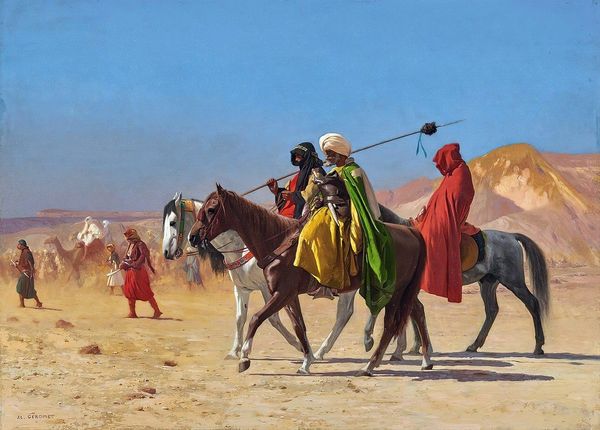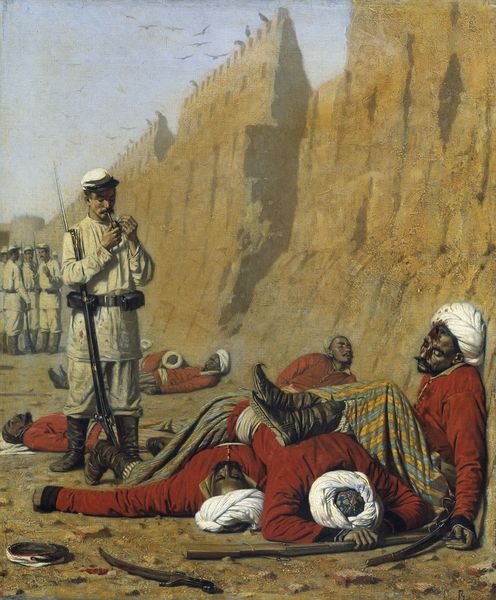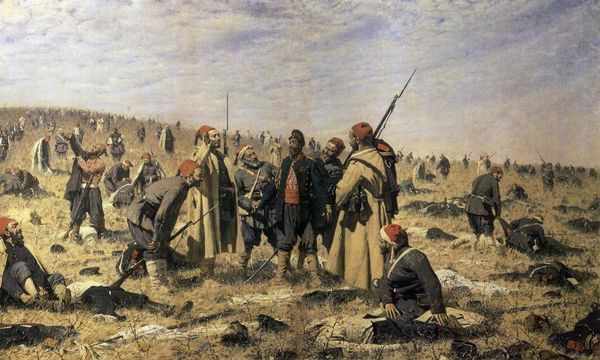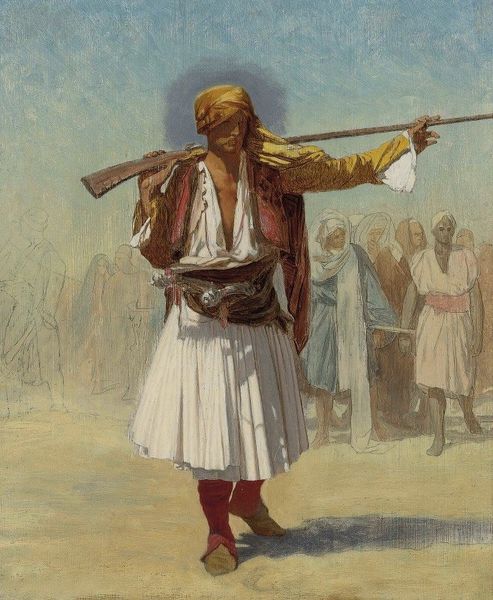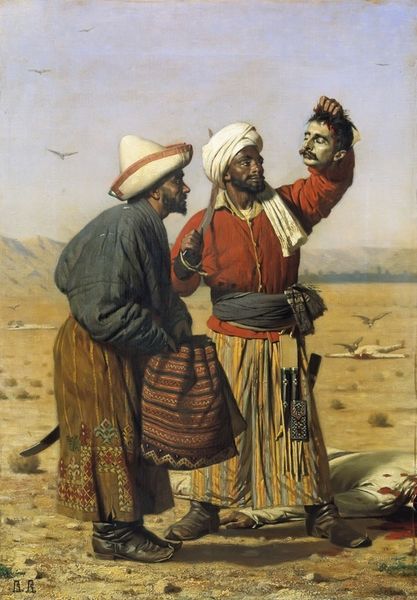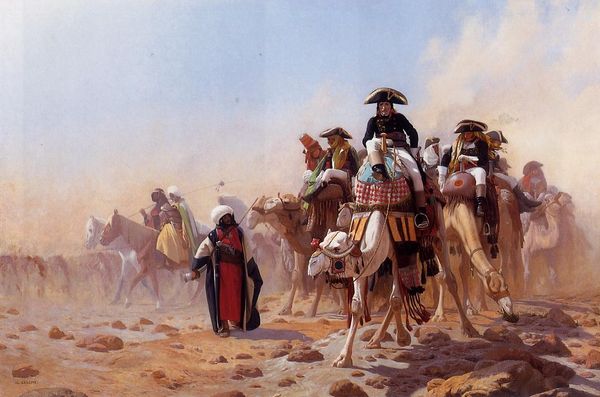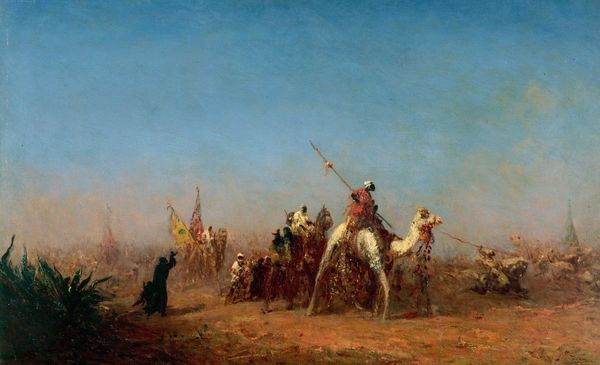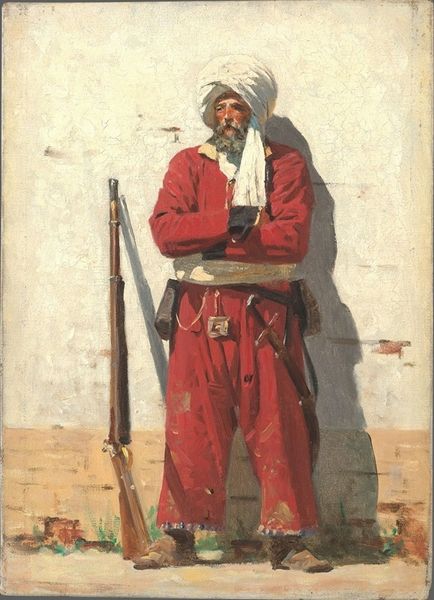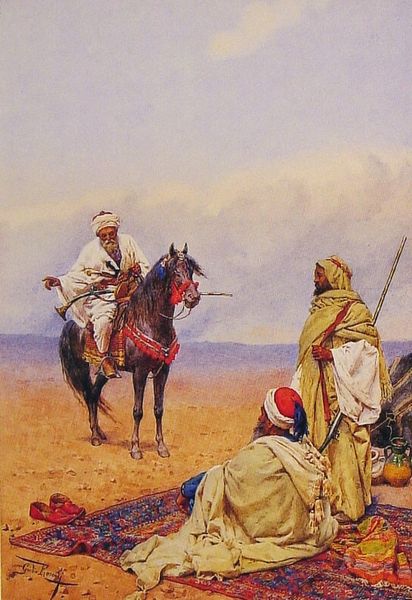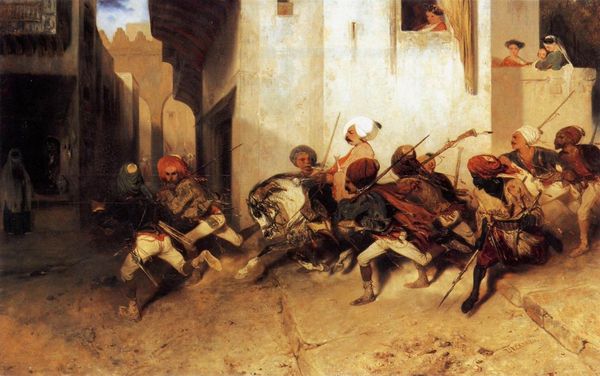
Two hawks (Bashi-bazouk) 1879
0:00
0:00
vasilyvereshchagin
Museum of Russian Art (Tereshchenko Museum), Kyiv, Ukraine
Copyright: Public domain
Editor: So, here we have Vasily Vereshchagin's "Two Hawks (Bashi-Bazouk)," painted in 1879, an oil on canvas currently housed in Kyiv. It's a surprisingly serene scene considering the military context. There's a clear distinction in dress between the seated figures and the uniformed soldier standing guard, creating a definite visual tension. How should we understand that? Curator: This contrast is key, isn't it? Vereshchagin, often critical of military campaigns, frequently depicted the human cost of conflict by juxtaposing figures like these Bashi-Bazouks, irregular Ottoman soldiers known for their…let’s say, independent behavior… with the standard, disciplined army. Consider when and where this was painted. The Russo-Turkish War had just ended. Editor: Right. The visual contrast suggests a tension between cultures or different types of power, doesn’t it? How would the average viewer have perceived these figures? Curator: That's precisely what Vereshchagin forces us to consider. Are they 'noble savages'? Oppressed people? Or something more complex? The ‘Orientalist’ gaze of the period often flattened such nuances, casting them as exotic others. But his unflinching style—some found it too literal, not sufficiently glorifying war—aimed to complicate such readings. Where do you feel Vereshchagin's sympathies lie? Editor: I guess it's easy to see them as romantic or 'othered,' as you said, but placing them within the broader war narrative does complicate it. The tents almost feel like a stage set. Curator: Yes, it is that theatrical quality that is key to seeing Vereshchagin's overall objective to represent war through the theater of socio-political history. That interpretation certainly complicates how to approach war paintings going forward! Editor: That’s fascinating! Thinking about how the public might have seen this then and how we see it now really shifts the meaning for me. Curator: Indeed, and considering his controversial status during his lifetime due to his unvarnished portrayals of conflict, the piece speaks to a recurring dialogue concerning how society understands, or perhaps misunderstands, war and its players.
Comments
No comments
Be the first to comment and join the conversation on the ultimate creative platform.
